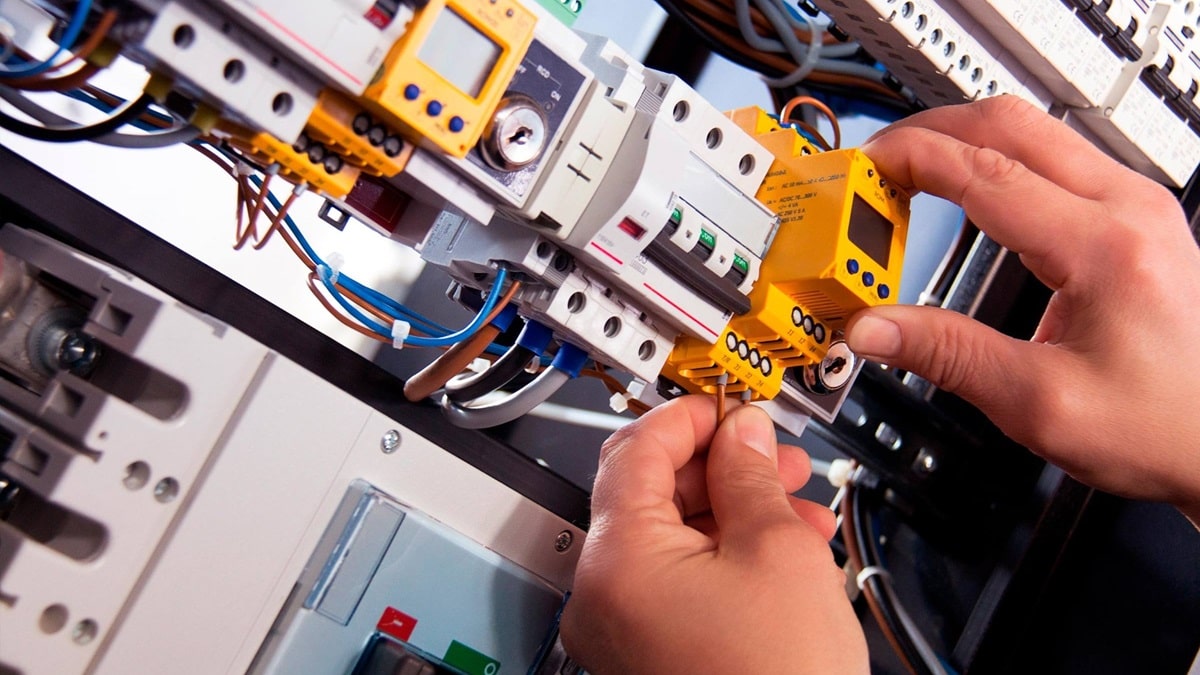As we all know, MCB (Miniature Circuit Breaker) is a compact electrical switch designed to automatically break and interrupt the flow of electricity in case of over-current or short-circuit, offering protection for circuits and devices in residential as well as commercial applications.
But there are different types of miniature circuit breakers for different applications and one should choose it wisely in order to safeguard appliances from over-current and short-circuit, otherwise it won’t work.
Circuit breaker’s trip curves represent the relationship between the current flowing through the circuit and the time it takes for the circuit breaker to trip or disconnect the circuit once the over-current is there.
Different trip curves are designated by letters such as A, B, C, D, K, and Z. These curves help match the circuit breaker’s response to the specific characteristics of the connected circuit.

Let’s see all of them one by one and understand what you need for your setup:
A curve – very sensitive.
The ‘A’ curve is designed for circuits with very low inrush currents, offering a fast response to protect sensitive electronic equipment and circuits from minor overloads and short circuits. It trips between 2 and 3 time full load current and commonly used in applications with electronics and computers.
Often recommend to sensitive appliances and mostly used in manufacturing of semiconductors.
Read more about inrush current here.
B curve – moderately sensitive.
The ‘B’ curve is designed for circuits with moderate inrush currents , offering a slower response compared to other curves, making it suitable for residential and light commercial applications where there may be occasional low-level inrush currents during normal operation, offering a balance between sensitivity and selectivity. It trips between 3 and 5 time full load current.
Often recommended to main house cables, water motors or submersible pumps, etc.
C curve – balanced and the most common.
The ‘C’ curve is a general-purpose curve commonly used in residential and commercial applications. It offers a balanced response to both short-circuit and overload conditions, making it suitable for a wide range of electrical circuits, including lighting and small appliances, where a versatile and reliable protection is needed. It trips between 5 and 10 times full load current.
Suitable for a wide range of applications, including lighting circuits and small appliances.
D curve – insensitive.
The ‘D’ curve is designed for circuits with high inrush currents, such as those associated with motors and transformers. It offers a slower response compared to B and C curves, providing effective protection against sustained overloads and short circuits in applications with equipment that has high starting currents or inductive loads. It trips between 10 and 20 times full load current.
Often used in circuits with motors, transformers, and other equipment with high torque currents.
K curve – very insensitive.
The ‘K’ curve is specifically designed for circuits with very high inrush currents, often associated with certain types of lighting or discharge lamps. It has a slower response than the ‘D’ curve, making it suitable for applications with extreme inrush currents, providing effective protection while accommodating the unique characteristics of circuits with high inductive loads. It trips between 8 and 12 times full load current.
Used with heavy-duty load devices like compressors, winding motors, X-ray machines, and certain types of fluorescent lighting or discharge lamps.
Z curve – made for uncommon use.
The ‘Z’ curve, sometimes labeled as ZSI (Zone Selective Interlocking), is designed for applications where selective coordination is crucial. This is not very common type and hard to find in local market.
It is typically used in systems with multiple circuit breakers, where coordination is required to isolate the faulted section of the circuit without unnecessarily tripping upstream breakers.
End note.
When selecting a circuit breaker for a particular application, it’s essential to consider the characteristics of the connected circuit, including the type of load, inrush currents, and the need for coordination with other safety devices. The appropriate trip curve ensures that the circuit breaker responds appropriately to different fault conditions while minimizing the risk of unnecessary tripping during normal operation.
Leave a Reply